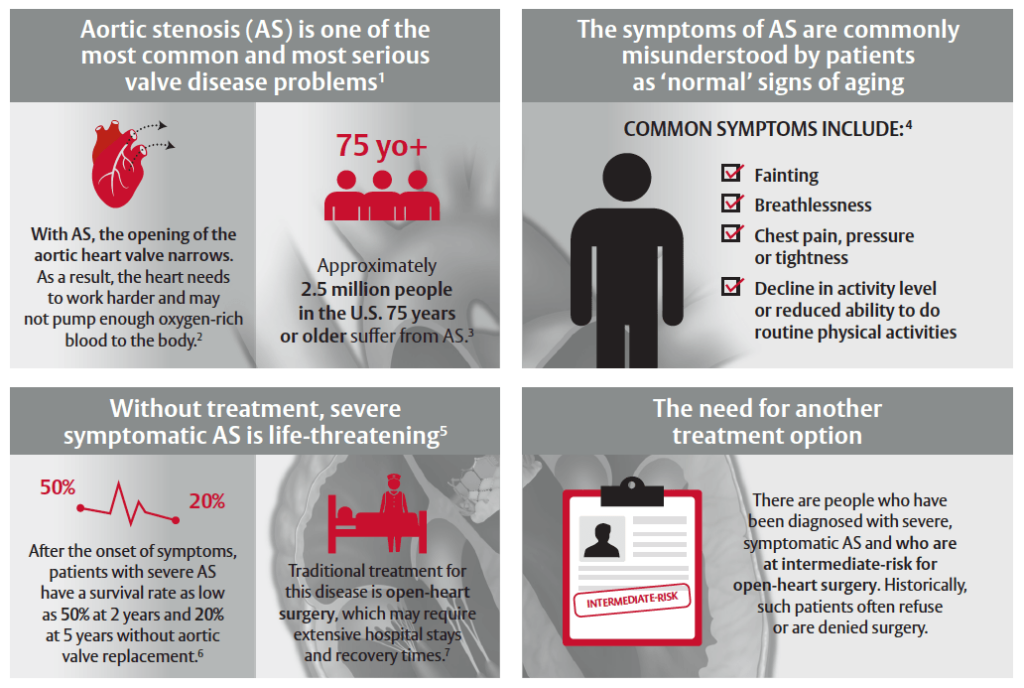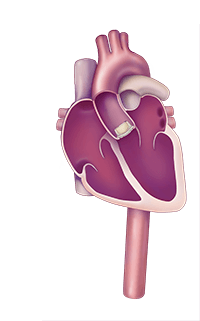What to Expect with TAVR
The TAVR valve replacement procedure involves replacing your damaged aortic valve with one made from cow or pig heart tissue, also called a biological tissue valve. In some cases, a TAVR biological tissue valve may also be placed in an existing biological tissue valve that is no longer working in order to replace it.
Preparing for TAVR
Your care team will give you specific instructions to prepare for your TAVR procedure. They will discuss with you how to prepare for the procedure and what to expect from the procedure. Talk with your care team about any questions or concerns you may have about the procedure.

SAPIEN 3 Valve in Valve Aortic Beauty Shot

Medtronic TAVR Valve
Before the TAVR Procedure
You will be evaluated to ensure you do not have any risk factors that may affect you during the TAVR procedure. You may be given a medication to reduce the risk of infection prior to your procedure. You may also need to have your hair shaved off at the location of your body where the procedure will take place.
Pre-TAVR Testing:
Prior to your procedure, testing may be performed to determine if TAVR is the best option for you. Testing is done in an outpatient basis and may include:
- Computerized tomography (CT) scan: An imaging test that uses x-rays to obtain detailed pictures of your heart and blood vessels
- Pulmonary function test (PFT): A group of tests, using special breathing equipment, that will measure how well your lungs are moving oxygen to the blood
- Transthoracic echocardiogram (TTE): This diagnostic test (also known as an echo) uses ultrasound to obtain 3D images of the heart. While lying down on a table, a probe will be placed on your chest wall and will use sound waves to provide detailed pictures of your heart.
During the TAVR Procedure
Your TAVR procedure will be performed in the hospital. The cardiologists at Hattiesburg Clinic perform TAVR procedures at Forrest General Hospital. Forrest General Hospital participates in the national STS/ACC TVT registry which measures:
- Patient demographics, provider and facility characteristics
- History/risk factors, cardiac status and detailed health status
- Well-defined indications for the procedure
- Pre, intra and post-procedure data points and adverse event rates
- Outcomes at 30 days and one year
You may receive general anesthesia before the TAVR procedure. A member of your care team will give you medication through an intravenous line to prevent blood clots.
Your care team will monitor your heart function and rhythm to watch for changes in heart function that may occur. Changes in function can be managed with treatments, as needed, during the procedure.
During TAVR, the transcatheter valve procedure can be performed via one of several potential access points:
- Transfemoral: A small opening is made for a catheter in a large artery in the groin area at the top of the leg. The catheter is threaded through the leg artery, up the aorta around the arch and into the aortic valve for valve placement.
- Transcarotid: An alternative access point when the transfemoral access point is not feasible. The catheter is inserted into the carotid artery to provide a more direct route to the aortic valve.
- Transapical: A three to four inch opening is made in the chest wall, between the ribs on the left side. The catheter is inserted through the chest wall, the heart wall and directly into the aortic valve for valve replacement.
- Transaortic: A two to three inch opening is made at the top of the breast bone. The catheter is inserted directly into the aorta and down into the aortic valve for valve placement.
- Transaxillary: Sometimes a transfemoral approach may not be possible and a transaxillary /subclavian route may be taken to access/replace the valve.
Once the catheter is inserted through the access point, your doctor will use advanced imaging techniques to guide the catheter through your blood vessels, to your heart and into the aortic valve.
A hollow tube (catheter) is inserted through the access point. Your doctor uses advanced imaging techniques to guide the catheter through your blood vessels, to your heart and into your aortic valve.
Once it is precisely positioned, a balloon is expanded to press the replacement valve into place in the native aortic valve. Some valves can expand without the use of a balloon.
When your doctor is certain the valve is securely in place, the catheter is withdrawn from your blood vessel or from the incision in your chest.
After the TAVR Procedure
Following your procedure, hospital stay is based on the access route when the procedure is performed.
The route of the catheter insertion into the access point usually determines your length of stay in the hospital. The average length of stay is two to seven days.
You will be required to take blood-thinning medications to prevent blood clots. Your doctor will discuss with you how long you may need to take these medications.
Your doctor will recommend that you take medications before certain dental procedures to prevent infections, as you are at higher risk of certain infections with a replacement heart valve. Talk to your doctor about his or her recommendations.



